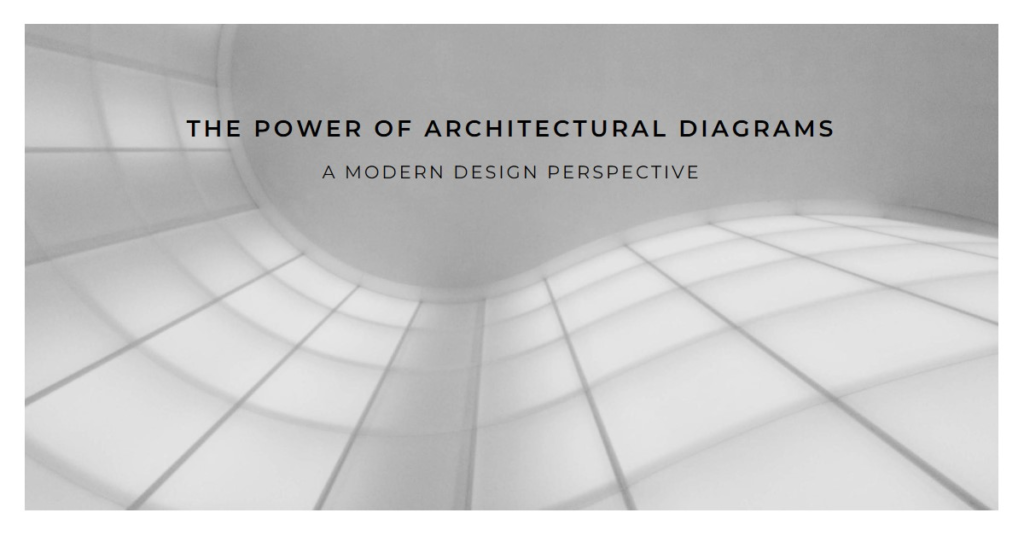
Table of Contents
- Introduction:
- Understanding the Essence of Architectural Diagrams:
- The Evolution of Architectural Diagrams:
- The Strategic Role in Conceptualization and Ideation:
- Facilitating Effective Communication and Collaboration:
- Navigating Complexity and Enhancing Clarity:
- Streamlining the Design Development Process:
- Driving Innovation and Pushing Boundaries:
- Conclusion:
Introduction:
In the dynamic landscape of modern design, where complexity reigns and innovation thrives, architectural diagrams emerge as the guiding stars illuminating the path from concept to realization. These visual blueprints transcend mere sketches, embodying the intricate interplay of form, function, and feasibility. In this comprehensive exploration, we delve into the multifaceted role of architectural diagrams, dissecting their significance in shaping the architectural narrative of our time.
Understanding the Essence of Architectural Diagrams:
At its core, an architectural diagram is more than a static representation of spatial arrangements; it serves as a conduit for ideas, a language that architects and stakeholders fluently speak to conceptualize and communicate design concepts. Unlike traditional blueprints confined to technicalities, architectural diagrams encapsulate the essence of a design vision, distilling it into a visual narrative that resonates across disciplines and audiences.
The Evolution of Architectural Diagrams:
As technology permeates every facet of our lives, architectural diagrams undergo a metamorphosis, evolving from hand-drawn sketches to dynamic digital renderings. CAD software, augmented reality, and virtual reality platforms empower architects to transcend the limitations of 2D representations, offering immersive experiences that bridge the gap between imagination and realization. This evolution not only enhances the clarity and precision of architectural communication but also fosters collaboration and innovation in the design process.
The Strategic Role in Conceptualization and Ideation:
At the genesis of every architectural marvel lies a seed of inspiration, germinating into a myriad of possibilities through the art of conceptualization. Architectural diagrams serve as the fertile ground where ideas take root and flourish, providing a visual framework for brainstorming, iteration, and refinement. Whether sketching rough outlines on a napkin or crafting intricate digital models, architects leverage diagrams to explore design permutations, experiment with spatial configurations, and crystallize abstract concepts into tangible form.
Facilitating Effective Communication and Collaboration:
In the intricate dance of architectural collaboration, effective communication reigns supreme, harmonizing the disparate voices of architects, clients, engineers, and stakeholders. Architectural diagrams act as universal translators, transcending linguistic barriers and technical jargon to convey design intent with clarity and conviction. Through annotated diagrams, 3D visualizations, and interactive models, architects foster a shared understanding, soliciting feedback, and catalyzing informed decision-making at every stage of the design process.


Navigating Complexity and Enhancing Clarity:
In the labyrinthine realm of architectural design, complexity lurks at every corner, threatening to obscure vision and derail progress. Architectural diagrams serve as navigational beacons, illuminating the intricate relationships between spatial elements, structural systems, and environmental factors. Through hierarchical diagrams, zoning plans, and circulation diagrams, architects distill complexity into digestible chunks, empowering stakeholders to grasp the big picture while appreciating the finer nuances of design intricacies.
Streamlining the Design Development Process:
In the fast-paced world of modern architecture, time is of the essence, and efficiency reigns supreme. Architectural diagrams streamline the design development process, expediting decision-making, and minimizing costly revisions. By visualizing design iterations in real-time, architects empower clients to make informed choices, aligning expectations with project feasibility and budget constraints. From schematic diagrams to detailed construction documents, each phase of the design journey benefits from the clarity and coherence afforded by architectural diagrams.
Driving Innovation and Pushing Boundaries:
At the vanguard of architectural innovation, architects wield diagrams as potent tools for pushing the boundaries of convention and catalyzing paradigm shifts in design thinking. By embracing parametric modeling, generative design algorithms, and computational analysis, architects transcend the constraints of intuition, harnessing the power of data-driven decision-making to optimize form, function, and performance. Through experimental diagrams and speculative renderings, architects chart a course towards a future where imagination knows no bounds, and innovation knows no limits.
Conclusion:
In the tapestry of modern design, architectural diagrams emerge as the thread that weaves together vision and reality, aspiration and achievement. From conceptualization to construction, these visual blueprints serve as the compass guiding architects through the labyrinth of creativity and constraint. As we embark on a journey towards a future defined by innovation and ingenuity, let us heed the lessons of architectural diagrams, embracing their transformative power to shape the built environment and enrich the human experience.



